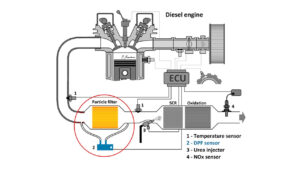Microcontrollers and microprocessors are the driving force behind many of the technological devices that we use on a daily basis. These tiny devices power everything from smartphones and laptops to smart home systems and self-driving cars. Despite their importance, many people are not familiar with the difference between microcontrollers and microprocessors, how they work, and the benefits they offer. In this blog, we will explore the world of microcontrollers and microprocessors and provide you with all the information you need to understand these essential components of modern technology.
First, let’s define what microcontrollers and microprocessors are. A microcontroller is a small computer that is embedded into a larger device or system, and it is designed to perform specific tasks. In contrast, a microprocessor is a general-purpose computer chip that is capable of running a variety of applications. Microcontrollers typically have less memory and processing power than microprocessors, but they are optimized for low-power and low-cost applications. Microprocessors, on the other hand, are more powerful and versatile, making them ideal for high-performance computing.
One of the most significant benefits of microcontrollers and microprocessors is their versatility. They can be programmed to perform a wide variety of tasks, from simple control tasks like turning on and off a light to more complex tasks like processing video or audio data. They are also highly adaptable, allowing developers to modify their programming to suit their specific needs.
Another advantage of microcontrollers and microprocessors is their low power consumption. Because they are designed to operate on small batteries or power supplies, they are ideal for applications where power efficiency is critical, such as portable devices, wearables, and IoT devices.
Microcontrollers and microprocessors are also highly reliable and robust. They are designed to operate in harsh environments and can withstand high levels of shock and vibration. They are also resistant to electromagnetic interference, making them ideal for use in industrial and automotive applications.
In conclusion, microcontrollers and microprocessors are the driving force behind many of the technological devices that we use every day. They are versatile, adaptable, low-power, and highly reliable, making them an essential component of modern technology. Whether you’re developing a new product, building a smart home system, or designing the next generation of autonomous vehicles, understanding how microcontrollers and microprocessors work is crucial for success. So, if you’re looking to stay ahead of the curve in the rapidly evolving world of technology, be sure to keep an eye on microcontrollers and microprocessors.
Advantages
Microcontrollers and microprocessors offer a range of advantages that make them ideal for many different applications. Here are some of the key advantages of microcontrollers and microprocessors:
- Versatility: Microcontrollers and microprocessors can be programmed to perform a wide variety of tasks, from simple control tasks to complex calculations and data processing. They can also be adapted to suit specific needs, making them ideal for a broad range of applications.
- Low power consumption: Microcontrollers and microprocessors are designed to operate on small batteries or power supplies, making them ideal for portable devices, wearables, and IoT devices. They are also energy-efficient, which helps to prolong battery life and reduce energy costs.
- Reliability: Microcontrollers and microprocessors are designed to operate in harsh environments and can withstand high levels of shock and vibration. They are also resistant to electromagnetic interference, making them ideal for use in industrial and automotive applications.
- Small size: Microcontrollers and microprocessors are small and compact, making them ideal for applications where space is limited. This also makes them easy to integrate into larger systems and devices.
- Cost-effective: Microcontrollers and microprocessors are relatively low-cost, making them accessible to a wide range of developers and manufacturers. This makes it easier for companies to develop and produce new products and technologies.
- Speed and performance: Microprocessors are capable of processing data at high speeds, making them ideal for applications that require real-time processing and high performance. Microcontrollers are also capable of performing basic control tasks at high speeds.
Overall, the advantages of microcontrollers and microprocessors make them an essential component of modern technology. They offer a powerful combination of versatility, low power consumption, reliability, small size, cost-effectiveness, and high performance, making them ideal for a wide variety of applications in fields like consumer electronics, automotive, medical, and industrial automation.
Disadvantages
While microcontrollers and microprocessors offer many advantages, they also have some disadvantages that should be taken into consideration when designing systems and products. Here are some of the key disadvantages of microcontrollers and microprocessors:
- Limited memory: Microcontrollers and some microprocessors have limited memory, which can be a constraint when developing complex applications. This can limit the ability to run multiple applications or processes simultaneously.
- Limited processing power: Some microcontrollers have limited processing power, which can be a constraint when developing applications that require high-speed data processing or complex calculations. In contrast, some microprocessors can handle more demanding processing tasks but may require more power.
- Programming complexity: Programming microcontrollers and microprocessors can be complex and require specialized skills. This can make it challenging for non-experts to develop applications or modify existing code.
- Cost of development: Developing applications for microcontrollers and microprocessors can be expensive, requiring specialized hardware and software tools. This can make it challenging for smaller companies or individuals to develop new products or technologies.
- Security risks: Microcontrollers and microprocessors can be vulnerable to security risks such as hacking and malware attacks. This is particularly concerning for applications that involve sensitive data or critical infrastructure.
- Integration challenges: Integrating microcontrollers and microprocessors into larger systems can be challenging, particularly when different components have different interfaces and communication protocols. This can require specialized expertise and additional development time.
Overall, while microcontrollers and microprocessors offer many advantages, they also have some limitations and challenges. To overcome these challenges, it is important to carefully evaluate the specific requirements of the application and choose the appropriate technology and development approach.


